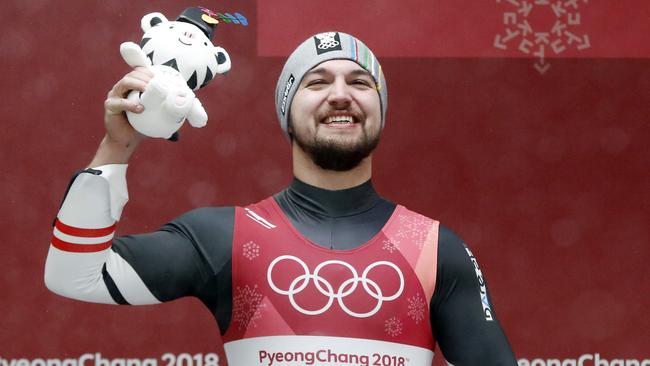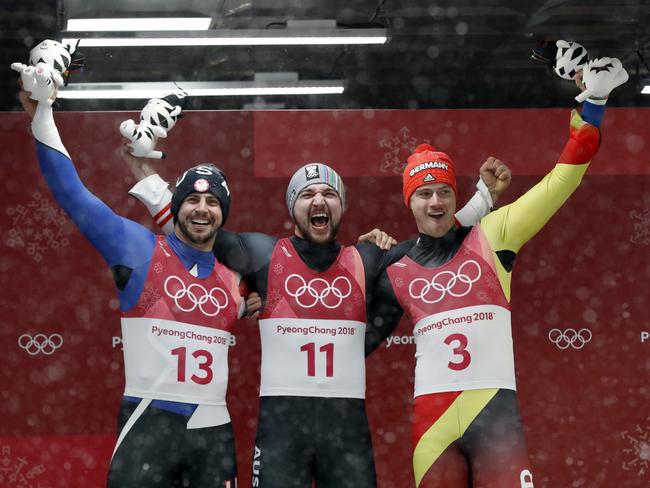Winter Olympics 2018: Why medal winners are posing with tigers
ATHLETES in PyeongChang who come first, second and third are leaving the podium with something very different to a medal. Here’s why.

WHITE isn’t a medal colour we’re accustomed to seeing on the Olympic podium.
Instead of being handed a gold, silver or bronze decoration to hang around their necks, winning athletes at the PyeongChang Games receive a white toy tiger.
Finnish skier Krista Parmakoski was handed the stuffed toy when she took out bronze for the 7.5-kilometre skiathlon cross-country skiing competition on Saturday.
Athletes Chris Mazdzer of the United States, David Gleirscher of Austria, and German Johannes Ludwig — who won silver, gold and bronze respectively in the men’s luge — were also among those who received the toy mascot.
It wasn’t long before social media noticed, leading some to ask what the tiger and apparent lack of medals was all about.
Despite my best Googling, still can’t figure out why #WinterOlympics medalists are being ceremoniously awarded stuffed white tigers. Anyone? #pyeongchang2018
— Constance Quinlan (@Connie_Quinlan) February 11, 2018
can someone please explain why the winners are only getting stuffed tigers instead of medals? I know the winter olympics are second rate but come on now... #Olympics #PyeongChang2018
— Rachel (@reglorious) February 10, 2018
Bahaha are they giving them little plush tigers instead of medals??!!! LMFAO #WinterOlympics
— Reshma Mehta (@reshmadc) February 11, 2018
Others didn’t seem to mind the absence of medals.
Lovin those toy tigers ðŸ˜ðŸ’¯ðŸ¥ˆðŸ¥ˆðŸ¥‰ðŸ¯ðŸ‡°ðŸ‡·#WinterOlympics#PyeongChang2018#MedalCeremony
— ✊Huey Newton🇹🇹 (@HueyNCadette) February 11, 2018
The white tiger, named Soohorang, is the official mascot of the PyeongChang Games and is given to athletes who have clinched a medal win.
However, sports fans can rest assured these athletes and every medal winner receive their trophies — it’s just not then and there.
As Slate writer Justin Peters points out, winter Olympic athletes don’t receive their respective medals straight away, unlike those who win bling at the larger summer games.
In keeping with tradition during the Winter Olympics, athletes instead get their medals during a single nightly celebration which takes place at Medals Plaza, PyeongChang.

International Olympic President Thomas Bach already handed out the first batch of medals during a ceremony on Saturday night.
Medals aside, the tiger remains an important part of Korean culture and of these games.
The white tiger — and Paralympic Winter Games mascot Bandabi, the Asiatic black bear — are both closely associated with Korean culture and folklore.
In a statement released last year, the PyeongChang 2018 Games organisers unveiled the icons and revealed why they were chosen.
“Tigers traditionally represent the shape of the Korean peninsula, and especially the white tiger is considered a sacred guardian animal,” the statement read.
Sooho is the Korean word for protection and Rang comes from the middle letter of “ho-rang-i,” which means tiger.




